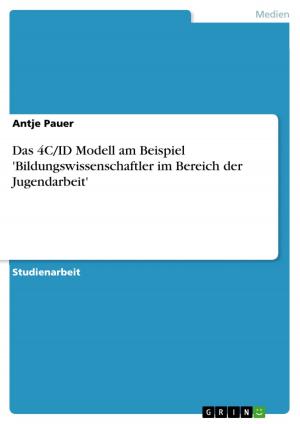| Author: | Ninad Gondhalekar | ISBN: | 9783656845034 |
| Publisher: | GRIN Verlag | Publication: | November 24, 2014 |
| Imprint: | GRIN Verlag | Language: | English |
| Author: | Ninad Gondhalekar |
| ISBN: | 9783656845034 |
| Publisher: | GRIN Verlag |
| Publication: | November 24, 2014 |
| Imprint: | GRIN Verlag |
| Language: | English |
Bachelor Thesis from the year 2013 in the subject Computer Science - Programming, Northumbria University, course: BEng. Electrical and Electronic Engineering (Hons.), language: English, abstract: Chamber is used to study atmospheric turbulence effects on FSO signals and this experiment is done inside the laboratory to avoid the interference of sunlight light and also it is hard to create turbulence outside laboratory as outside temperature and pressure will affect the turbulence created inside this chamber. This project is all about controlling all parameters (temperature, pressure, humidity) using sensors, fans, thermistors through embedded circuit. As observed from previous work, high end microPIC (PIC18 series) although it has many functionality and large program memory size, it is hard to control all sensors, fans, thermistor using 1 PIC1866K80, So in this project mid-range PIC (PIC16 series) are used to control sensors, fans and thermistors. In this project, temperature, humidity, pressure sensors are controlled by different microcontrollers and taking their reading to manage the performance of PWM fans and thermistors inside the chamber. These components are very important to configure and monitor the atmospheric condition inside the chamber. This project focuses on the use of PIC16 family microcontrollers to be programmed in C language or in assembly to control all sensors, fans and thermistor and build PCB layout. In this project, Rs-232 or Com port will be used as an interface to control the PIC16 microcontroller instruction and procedure through computer.
Bachelor Thesis from the year 2013 in the subject Computer Science - Programming, Northumbria University, course: BEng. Electrical and Electronic Engineering (Hons.), language: English, abstract: Chamber is used to study atmospheric turbulence effects on FSO signals and this experiment is done inside the laboratory to avoid the interference of sunlight light and also it is hard to create turbulence outside laboratory as outside temperature and pressure will affect the turbulence created inside this chamber. This project is all about controlling all parameters (temperature, pressure, humidity) using sensors, fans, thermistors through embedded circuit. As observed from previous work, high end microPIC (PIC18 series) although it has many functionality and large program memory size, it is hard to control all sensors, fans, thermistor using 1 PIC1866K80, So in this project mid-range PIC (PIC16 series) are used to control sensors, fans and thermistors. In this project, temperature, humidity, pressure sensors are controlled by different microcontrollers and taking their reading to manage the performance of PWM fans and thermistors inside the chamber. These components are very important to configure and monitor the atmospheric condition inside the chamber. This project focuses on the use of PIC16 family microcontrollers to be programmed in C language or in assembly to control all sensors, fans and thermistor and build PCB layout. In this project, Rs-232 or Com port will be used as an interface to control the PIC16 microcontroller instruction and procedure through computer.















